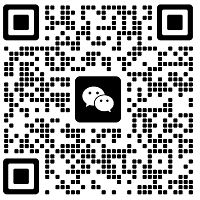How is Astaxanthin Powder extracted from natural sources?
Astaxanthin powder, a potent antioxidant carotenoid, has gained significant attention in the nutraceutical, cosmetic, and food industries due to its numerous health benefits. The extraction of astaxanthin powder from natural sources is a complex process that requires advanced techniques and rigorous quality control measures. This blog post delves into the intricacies of astaxanthin powder extraction, exploring the key natural sources, extraction techniques, optimization methods, and quality control measures employed in its production. By understanding these processes, we can appreciate the effort and expertise that goes into creating high-quality astaxanthin powder, such as the premium product offered by Avans NutriHealth Co., Ltd., which boasts concentrations ranging from 1% to 10% to meet diverse industry needs.

Key Natural Sources and Extraction Techniques for Astaxanthin Powder
Primary Natural Sources of Astaxanthin
Astaxanthin powder is primarily derived from natural sources, with the microalgae Haematococcus pluvialis being the most commercially significant. This microalgae species is capable of accumulating astaxanthin in high concentrations, making it an ideal source for industrial-scale production. Other natural sources include krill, shrimp, and certain types of yeast. However, Haematococcus pluvialis remains the preferred choice due to its high astaxanthin content and the ability to cultivate it in controlled environments. The cultivation of this microalgae involves carefully managed conditions to stimulate astaxanthin production, ensuring a consistent and high-quality source of the compound for extraction.
Supercritical CO2 Extraction
One of the most advanced and efficient methods for extracting astaxanthin powder from Haematococcus Pluvialis Powder is supercritical CO2 extraction. This technique utilizes carbon dioxide in its supercritical state, where it exhibits properties of both a liquid and a gas. The process involves subjecting the biomass containing astaxanthin to supercritical CO2, which acts as a solvent to selectively extract the desired compounds. This method is particularly advantageous for astaxanthin powder production as it allows for extraction at relatively low temperatures, preserving the integrity of the heat-sensitive compound. Moreover, the use of CO2 as a solvent ensures that the final product is free from harmful chemical residues, aligning with the growing demand for clean-label and natural products in various industries.
Solvent Extraction and Purification
Another common method for extracting astaxanthin powder involves the use of organic solvents. This process typically begins with the disruption of the algal cell walls to release the astaxanthin. Solvents such as acetone, ethanol, or hexane are then used to extract the compound from the biomass. Following extraction, the solvent is removed through evaporation, leaving behind a crude extract. This extract then undergoes further purification steps, which may include chromatography or recrystallization, to isolate and concentrate the astaxanthin. While effective, this method requires careful handling of solvents and thorough purification to ensure the final astaxanthin powder meets purity standards and is free from solvent residues.
How Purity and Yield Are Optimized in Astaxanthin Powder Production?
Advanced Cultivation Techniques
Optimizing the purity and yield of astaxanthin powder begins at the cultivation stage of the microalgae. Advanced techniques such as photobioreactors and stress-induced astaxanthin accumulation are employed to maximize the astaxanthin content in Haematococcus pluvialis. These controlled environments allow for the manipulation of light, temperature, and nutrient conditions to stress the algae, triggering increased astaxanthin production. By fine-tuning these parameters, producers can significantly enhance the astaxanthin concentration in the biomass before extraction. This not only improves the overall yield but also contributes to the purity of the final astaxanthin powder by increasing the ratio of astaxanthin to other cellular components.
Innovative Extraction Technologies
To further optimize purity and yield, innovative extraction technologies are continually being developed and refined. One such technology is the use of ultrasound-assisted extraction, which can enhance the efficiency of solvent-based methods. The ultrasonic waves create cavitation bubbles that collapse, disrupting cell walls and improving the penetration of solvents. This results in a more complete extraction of astaxanthin from the biomass. Another promising approach is the use of enzyme-assisted extraction, where specific enzymes are employed to break down cell walls and release astaxanthin more effectively. These methods not only increase the yield of astaxanthin powder but also contribute to its purity by facilitating a more selective extraction process.
Purification and Concentration Techniques
After the initial extraction, various purification and concentration techniques are employed to enhance the purity of astaxanthin powder. Chromatographic methods, such as high-performance liquid chromatography (HPLC), are often used to separate astaxanthin from other compounds present in the extract. This allows for the isolation of highly pure astaxanthin. Additionally, membrane filtration technologies, including ultrafiltration and nanofiltration, can be used to concentrate the astaxanthin solution and remove impurities. These advanced purification steps are crucial in producing high-quality astaxanthin powder with concentrations ranging from 1% to 10%, as offered by companies like Avans NutriHealth Co., Ltd., ensuring that the final product meets the stringent purity requirements of various industries.
Quality Control and Standardization in Extracting Astaxanthin Powder
Analytical Methods for Purity Assessment
Ensuring the quality and consistency of astaxanthin powder requires rigorous analytical methods for purity assessment. High-performance liquid chromatography (HPLC) is the gold standard for quantifying astaxanthin content and identifying potential impurities. This technique allows for the precise determination of astaxanthin concentration and the detection of isomers or degradation products. Spectrophotometric methods are also employed for rapid screening of astaxanthin content. Additionally, mass spectrometry can be used for in-depth analysis of the molecular structure and potential contaminants. These analytical tools are essential for maintaining the high quality of astaxanthin powder throughout the production process and ensuring that the final product meets the specified concentration range, such as the 3%-5% offered by Avans NutriHealth Co., Ltd.
Standardization of Extraction Protocols
To maintain consistency in the quality of astaxanthin powder from Haematococcus Pluvialis Powder across different batches and production facilities, standardization of extraction protocols is crucial. This involves developing and adhering to detailed standard operating procedures (SOPs) that cover every aspect of the extraction process, from biomass preparation to final product packaging. These SOPs include specific parameters for extraction conditions, such as temperature, pressure, and solvent ratios, as well as guidelines for equipment calibration and maintenance. Regular audits and validation studies are conducted to ensure compliance with these standardized protocols. By implementing such rigorous standardization measures, manufacturers can consistently produce high-quality astaxanthin powder that meets the expectations of customers across various industries.
Regulatory Compliance and Certification
Quality control in astaxanthin powder production extends beyond internal protocols to include compliance with regulatory standards and obtaining relevant certifications. Manufacturers must adhere to Good Manufacturing Practices (GMP) and obtain certifications such as ISO, HACCP, and FSSC22000, as demonstrated by Avans NutriHealth Co., Ltd. These certifications ensure that the production process meets international quality and safety standards. Additionally, specific industry certifications, such as USDA Organic or Non-GMO Project Verified, may be pursued to meet the demands of particular market segments. Regular audits by certification bodies and regulatory agencies help maintain the integrity of these standards. Compliance with these regulations and certifications not only ensures the quality and safety of astaxanthin powder but also builds trust with customers and end-users across the food, health care, cosmetic, and pharmaceutical industries.
Conclusion
The extraction of high-quality astaxanthin powder from natural sources is a complex process that requires advanced technologies, rigorous quality control, and adherence to strict standards. From the cultivation of Haematococcus pluvialis to the final purification steps, each stage of production is critical in ensuring the purity, potency, and consistency of the final product. As the demand for natural antioxidants continues to grow across various industries, the importance of efficient and standardized extraction methods becomes increasingly evident. Companies like Avans NutriHealth Co., Ltd. are at the forefront of this industry, providing premium astaxanthin powder that meets the diverse needs of their clients while maintaining the highest quality standards.
At Avans NutriHealth Co., Ltd., we pride ourselves on being a leading manufacturer and supplier of plant extracts, nutritional supplements, and food additives in China. Our commitment to quality, innovation, and customer satisfaction is reflected in our state-of-the-art R&D capabilities and rigorous quality control measures. With an annual production capacity of 1,000 tons and a team of over 100 skilled technicians, we are well-equipped to meet the growing global demand for high-quality astaxanthin powder and other natural products. Our certifications, including ISO, USDA, HACCP, FSSC22000, and HALAL, underscore our dedication to producing safe and effective products. For more information about our premium astaxanthin powder or other products, please contact us at Lillian@avansnutri.com.
FAQ
Q: What is the primary natural source of astaxanthin powder?
A: The primary natural source of astaxanthin powder is the microalgae Haematococcus pluvialis, known for its high astaxanthin content.
Q: What are the main extraction methods for astaxanthin powder?
A: The main extraction methods include supercritical CO2 extraction and solvent extraction, followed by purification processes.
Q: How is the purity of astaxanthin powder ensured?
A: Purity is ensured through advanced cultivation techniques, innovative extraction technologies, and rigorous purification methods such as chromatography and membrane filtration.
Q: What analytical methods are used to assess the quality of astaxanthin powder?
A: High-performance liquid chromatography (HPLC), spectrophotometry, and mass spectrometry are commonly used to assess the quality and purity of astaxanthin powder.
Q: What certifications are important for astaxanthin powder manufacturers?
A: Important certifications include ISO, USDA, HACCP, FSSC22000, and HALAL, which ensure compliance with international quality and safety standards.
References
1. Shah, M. M., Liang, Y., Cheng, J. J., & Daroch, M. (2016). Astaxanthin-producing green microalga Haematococcus pluvialis: from single cell to high value commercial products. Frontiers in Plant Science, 7, 531.
2. Molino, A., Mehariya, S., Iovine, A., Larocca, V., Di Sanzo, G., Martino, M., ... & Musmarra, D. (2018). Extraction of astaxanthin and lutein from microalga Haematococcus pluvialis in the red phase using CO2 supercritical fluid extraction technology with ethanol as co-solvent. Marine drugs, 16(11), 432.
3. Khoo, K. S., Chew, K. W., Ooi, C. W., Ong, H. C., Ling, T. C., & Show, P. L. (2019). Extraction of natural astaxanthin from Haematococcus pluvialis using liquid biphasic flotation system. Bioresource technology, 290, 121794.
4. Saini, R. K., & Keum, Y. S. (2018). Carotenoid extraction methods: A review of recent developments. Food chemistry, 240, 90-103.
5. Ambati, R. R., Phang, S. M., Ravi, S., & Aswathanarayana, R. G. (2014). Astaxanthin: sources, extraction, stability, biological activities and its commercial applications—a review. Marine drugs, 12(1), 128-152.
6. Capelli, B., Bagchi, D., & Cysewski, G. R. (2013). Synthetic astaxanthin is significantly inferior to algal-based astaxanthin as an antioxidant and may not be suitable as a human nutraceutical supplement. Nutrafoods, 12(4), 145-152.



